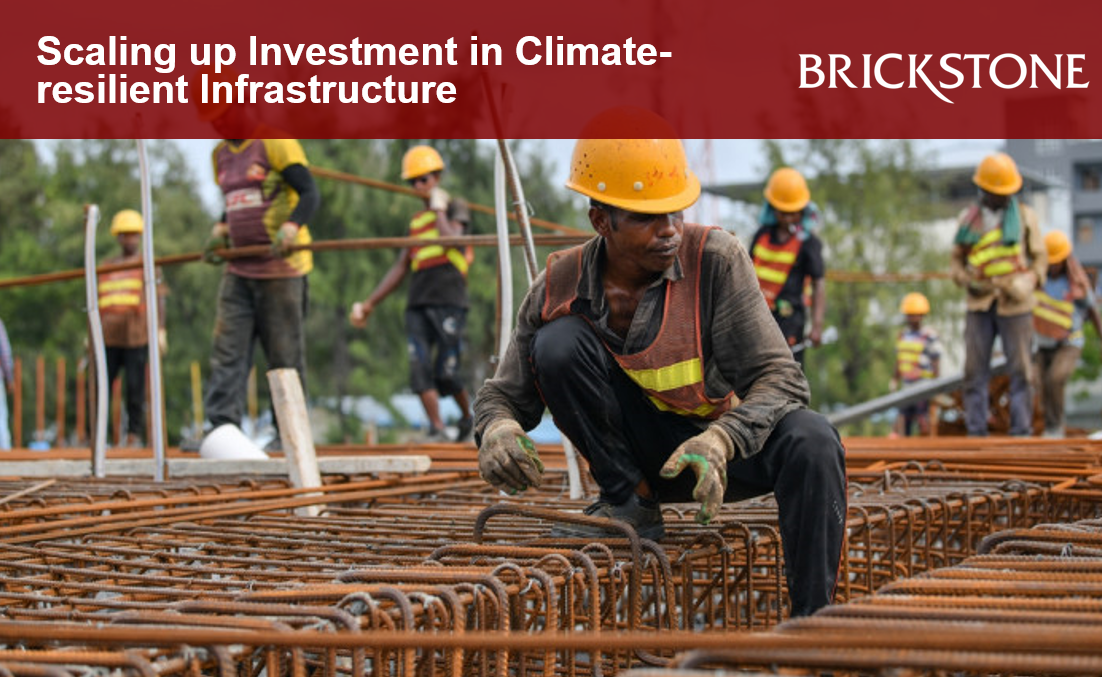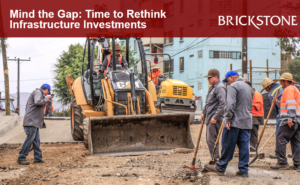Scaling up Investment in Climate-resilient Infrastructure
Climate change currently represents a major challenge in the world today, as it threatens the lives and livelihoods of over 100 million in extreme poverty. It poses risks to national economies, financial markets, infrastructure investments, water and food systems, public health, agriculture, and livelihoods. As a major impact of this menace, climate change also exposes nations to exponential collateral damage to infrastructure, disrupting services and exacting a significant human and economic toll in such nations.
Minimizing these impacts on infrastructure, experts have proffered the adoption of climate-resilient infrastructure as an effective adaptive measure core for every unit of government and sector of the economy.
However, a massive amount of investment is required to realize this solution as infrastructure projects targeting adaptation are suffering from a huge financing gap. In lieu of this, a NEP report in 2021 estimates that global climate resilience financing needs will be up to USD 300 billion per year by 2030, and up to USD 500 billion per year by 2050. To meet this funding goal, there’s the urgency in the need to scale up investments in Climate-resilient infrastructure, with private investment being a critical financing option.
This article by Brickstone reviews LTIIA’s recent report on how to scale up private investment in climate-resilient infrastructure.
Private Investment in Climate-resilient Infrastructure
Quality infrastructure investments, inclusive and resilient to positively impact the economy, environment, society, and development, play a substantial role in structural transformation especially in developing countries. Its need has been widely emphasized in the context of sustainable development, the clean energy transition, and the post-pandemic economic recovery. In fact, quality infrastructure investments support inclusive growth and enhance access to all.
Infrastructure is reckoned to be on the front line for Climate change as both a driver and a prime potentially impacted sector. Its assets are vulnerable to extreme weather events, or just small local shocks, liable to disrupt complex networks.
However, the global infrastructure demand is high as experts estimate that from 2016 to 2030, there will be a need to invest on average USD3.3 trillion annually to keep pace with the projected growth rate. The World Bank reported that roughly $2.6 trillion dollars is required annually through 2030 to meet the Sustainable Development Goals (SDGs) and stay on a path to a net-zero society by 2050. This means that central to achieving this goal, is the need to scale up investment, in a bid to bridge the financing gap.
According to LTIIA, there are several obstacles facing investors in Climate-resilient infrastructure assets today, which are core to scaling up investment in the sector. This range from data quandary, weak financial oversight and framework for PPPs, lack of appropriate KPI and standards, lack of visibility on Governments’ investment gaps and Adaptation strategies, and other sector-specific issues. Tacking these barriers is required to further unlock private investment in Climate-resilient infrastructure.
How to Scale-up Private Investment in Climate-resilient Infrastructure
To scale-up private investment in climate-resilient infrastructure, LTIIA proffers the following ways and recommendations:
Investors in infrastructure projects should integrate best practices of climate resilience into the investment project design, operations, and maintenance. This should be systematic in new “Greenfield” projects, as it is a well-known fact that the incremental investment cost required is much smaller at this upstream stage. It should include embedding climate resilience into project structuring through resilient design and Key Performance Indicators (KPIs), as well as setting higher resilience benchmarks into O&M standards and leveraging data to monitor resilience options and maximize benefits of current and future projects.
Change in Data/Climate change modelling. According to LTIIA, the creation of an international climate-computing centre at the supranational level would be useful to keep improving scientific models for forecasting climate change impacts. To effectively scale up investment in climate-resilient infrastructure, this action would have to be complemented by subnational, locally produced relevant data needed at the project asset level.
Governments, central procuring authorities and regulators should implement appropriate public procurement tools. According to LTIIA, procuring authorities should include climate resilience as a significantly-weighted attribution criteria in public procurement tenders, promote most appropriate public contracting tools, revive public-private partnerships, and be prepared to inject public co-financing as a means to catalyse private investment in non- commercially viable climate adaptation projects.
Appropriate enabling framework & incentives should be incorporated in scaling up investment in climate-resilient infrastructure. At the national level, there is a continuous need for clear Policy & regulatory Framework, combined with National infra plans to target climate adaptation and ensure steady flow of deals (Pipeline); new data processing technologies can now allow governments to identify ‘hotspots’ across a country’s major infrastructure networks most vulnerable to climate risk, ensuring the effective and efficient investment of public and private resources. Also, key regulatory initiatives will also be needed in some jurisdictions to facilitate blending of resources and finance between the public and private sectors and corresponding budgets assigned.
Local governments and public authorities should elaborate programs, identify projects & allocate budgets. According to LTIIA, most infrastructure projects are initiated at the local government level, but work is needed on aggregating small projects into platforms to reach a critical mass liable to attract private investors. Local Governments and Authorities are also the best placed to provide relevant/localized Climate data and determine climate change impacts for the granular and detailed modelling needed by investors and corporations to adapt to climate change.
Public Development Banks should support, leverage, and prioritize Climate- resilient projects. According to the LTIIA’s report, the Climate resilience issue has already been identified and incorporated in Multilateral and Public Development Banks strategies. However, there is still room to better prioritize Climate resilient projects & offer blended finance geared to further leverage private investment in contractual or regulated infrastructure.
The emergence of specialized Climate resilient Infrastructure Investment funds should be encouraged. Resilience-focused investment funds are beginning to emerge in the infrastructure upstream space. Private-equity firms are ploughing money into technologies such as geospatial imaging, weather analytics and precision agriculture, helping alleviate the data availability issue. Sustainable energy infrastructure firms with backers including pension funds from all over OECD countries, raised billions of dollars, on a narrative of no-trade-offs between returns and resilience benefits. The fact that these funds are often oversubscribed by institutional investors points to a keen interest, underpinned by the realization that sustainability to Climate change doesn’t have to come at the expense of financial performances.
Download the full report here.






